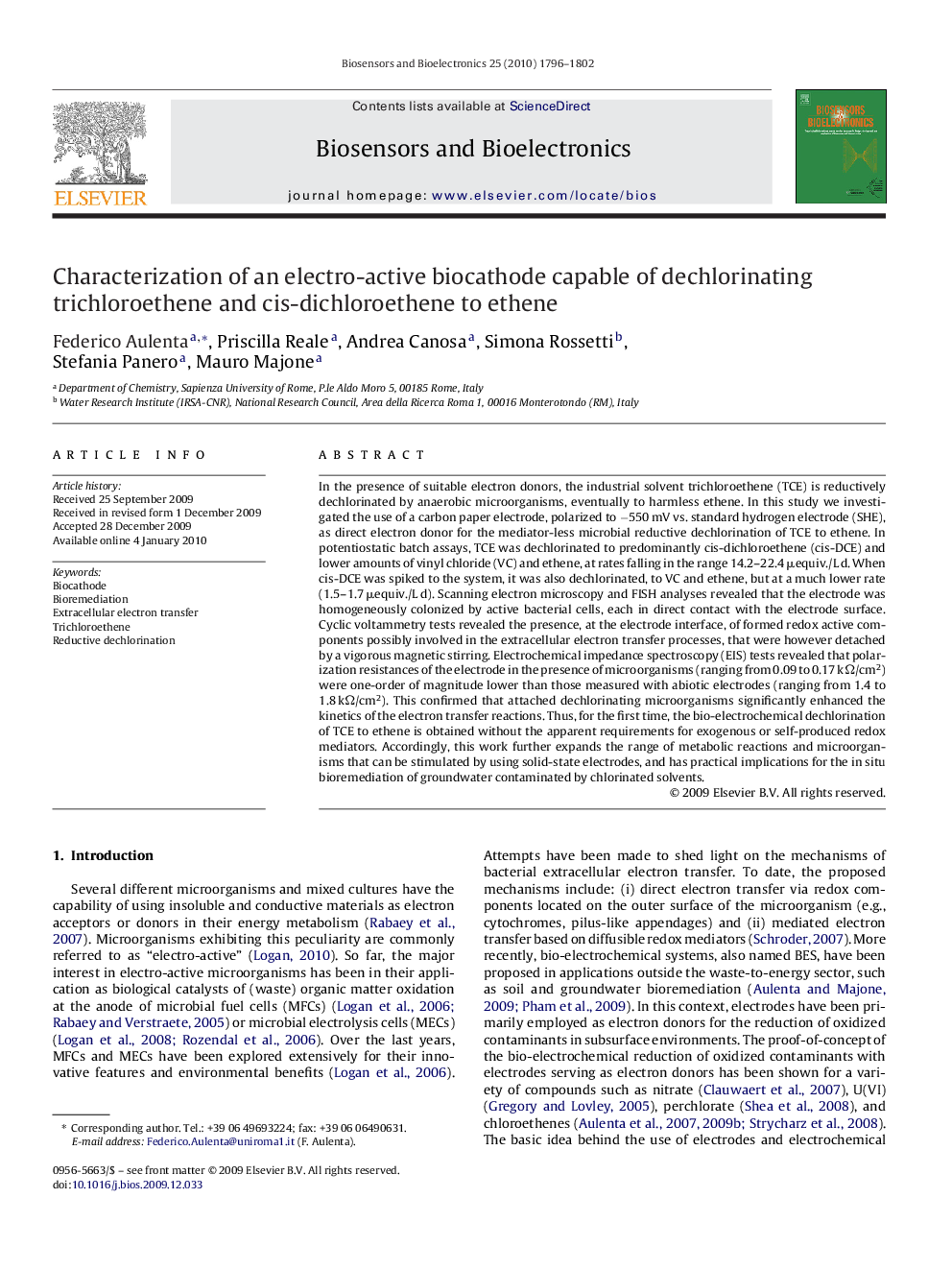| کد مقاله | کد نشریه | سال انتشار | مقاله انگلیسی | نسخه تمام متن |
|---|---|---|---|---|
| 867878 | 909795 | 2010 | 7 صفحه PDF | دانلود رایگان |

In the presence of suitable electron donors, the industrial solvent trichloroethene (TCE) is reductively dechlorinated by anaerobic microorganisms, eventually to harmless ethene. In this study we investigated the use of a carbon paper electrode, polarized to −550 mV vs. standard hydrogen electrode (SHE), as direct electron donor for the mediator-less microbial reductive dechlorination of TCE to ethene. In potentiostatic batch assays, TCE was dechlorinated to predominantly cis-dichloroethene (cis-DCE) and lower amounts of vinyl chloride (VC) and ethene, at rates falling in the range 14.2–22.4 μequiv./L d. When cis-DCE was spiked to the system, it was also dechlorinated, to VC and ethene, but at a much lower rate (1.5–1.7 μequiv./L d). Scanning electron microscopy and FISH analyses revealed that the electrode was homogeneously colonized by active bacterial cells, each in direct contact with the electrode surface. Cyclic voltammetry tests revealed the presence, at the electrode interface, of formed redox active components possibly involved in the extracellular electron transfer processes, that were however detached by a vigorous magnetic stirring. Electrochemical impedance spectroscopy (EIS) tests revealed that polarization resistances of the electrode in the presence of microorganisms (ranging from 0.09 to 0.17 kΩ/cm2) were one-order of magnitude lower than those measured with abiotic electrodes (ranging from 1.4 to 1.8 kΩ/cm2). This confirmed that attached dechlorinating microorganisms significantly enhanced the kinetics of the electron transfer reactions. Thus, for the first time, the bio-electrochemical dechlorination of TCE to ethene is obtained without the apparent requirements for exogenous or self-produced redox mediators. Accordingly, this work further expands the range of metabolic reactions and microorganisms that can be stimulated by using solid-state electrodes, and has practical implications for the in situ bioremediation of groundwater contaminated by chlorinated solvents.
Journal: Biosensors and Bioelectronics - Volume 25, Issue 7, 15 March 2010, Pages 1796–1802